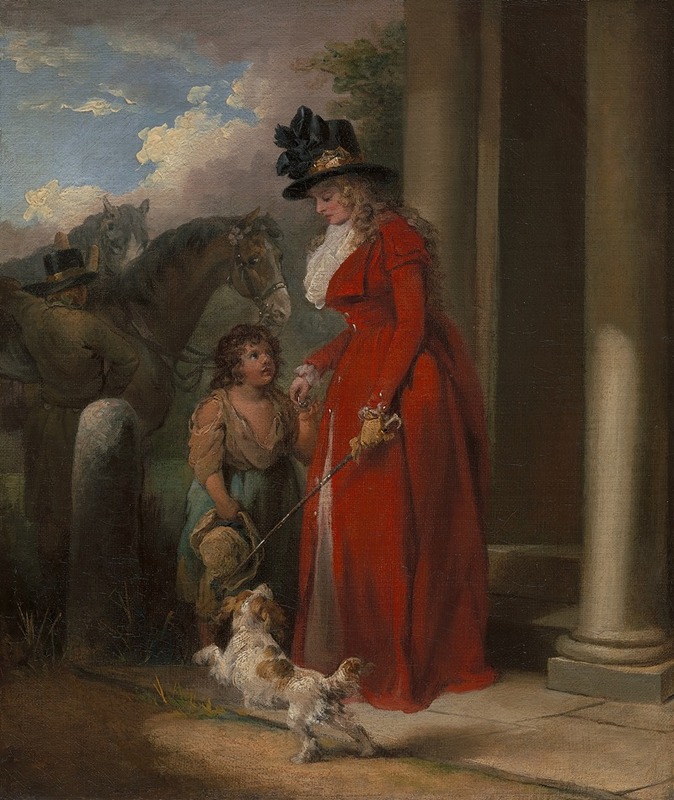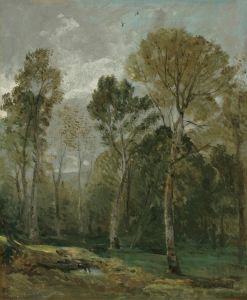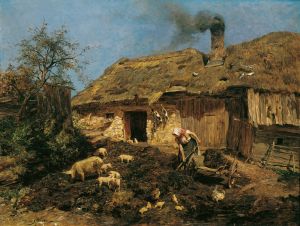
The Squire’s Door
A hand-painted replica of George Morland’s masterpiece The Squire’s Door, meticulously crafted by professional artists to capture the true essence of the original. Each piece is created with museum-quality canvas and rare mineral pigments, carefully painted by experienced artists with delicate brushstrokes and rich, layered colors to perfectly recreate the texture of the original artwork. Unlike machine-printed reproductions, this hand-painted version brings the painting to life, infused with the artist’s emotions and skill in every stroke. Whether for personal collection or home decoration, it instantly elevates the artistic atmosphere of any space.
George Morland's painting The Squire’s Door is a notable example of the artist's work during the late 18th century. Morland (1763–1804) was an English painter renowned for his rustic and genre scenes, often depicting rural life, landscapes, and scenes of everyday activity. His works are characterized by their naturalistic style, attention to detail, and ability to capture the essence of rural England.
The Squire’s Door is believed to have been created during the height of Morland's career, a period when he was producing some of his most celebrated works. The painting portrays a scene outside the door of a country squire's residence, featuring figures engaged in casual interaction. True to Morland's style, the composition reflects a sense of warmth and familiarity, emphasizing the simplicity and charm of rural life. The figures are depicted with a sense of individuality and realism, a hallmark of Morland's approach to genre painting.
The setting of the painting includes architectural elements typical of an English countryside estate, such as a sturdy wooden door and stone or brickwork, which serve as a backdrop for the human activity in the foreground. The natural environment, including trees and possibly animals, is rendered with Morland's characteristic attention to texture and light, enhancing the overall atmosphere of the scene.
Morland's works, including The Squire’s Door, were highly sought after during his lifetime, and he gained considerable fame for his ability to depict rural life with authenticity and charm. However, despite his artistic success, Morland's personal life was marked by financial difficulties and struggles with debt, which ultimately affected his career and legacy.
Today, The Squire’s Door is recognized as an example of Morland's contribution to English art, particularly in the genre of rural and domestic scenes. The painting is often cited as a representation of his skill in capturing the nuances of everyday life and his ability to evoke a sense of nostalgia for the English countryside. It is held in high regard by art historians and collectors, although specific details about its current location or ownership may vary.
As with many of Morland's works, The Squire’s Door reflects the social and cultural context of late 18th-century England, offering insight into the lives of both the rural gentry and the working class. The painting remains a testament to Morland's talent and his enduring influence on the tradition of British genre painting.


















